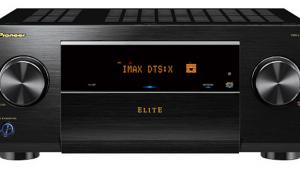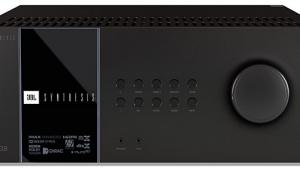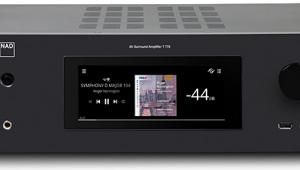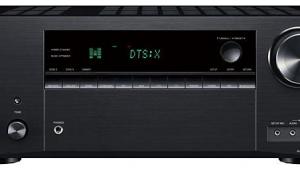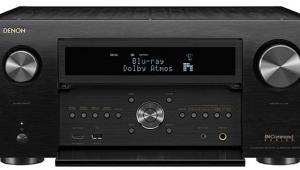NAD T 787 A/V Receiver Page 2
Bold, Meaty Sound
What does meat have to do with sound? What does leather, asphalt, or jam have to do with wine? The wine guys use those and other descriptors all the time. The one they never use is grapey. God forbid a wine tastes like grapes! Ah, but I digress.
A/V receivers seem to have become increasingly thinned out and skeletal sounding over time, and some manufacturers are switching (no pun intended) to Class D amplification. But on first listen, the T 787 immediately took up residence on the full, rich, well-balanced, and pleasingly solid side of the audio street—and that was from a manual setup before I ran the Audyssey program. The T 787 exhibited a level of iron-fisted, speaker-gripping control rarely encountered in the receiver world.
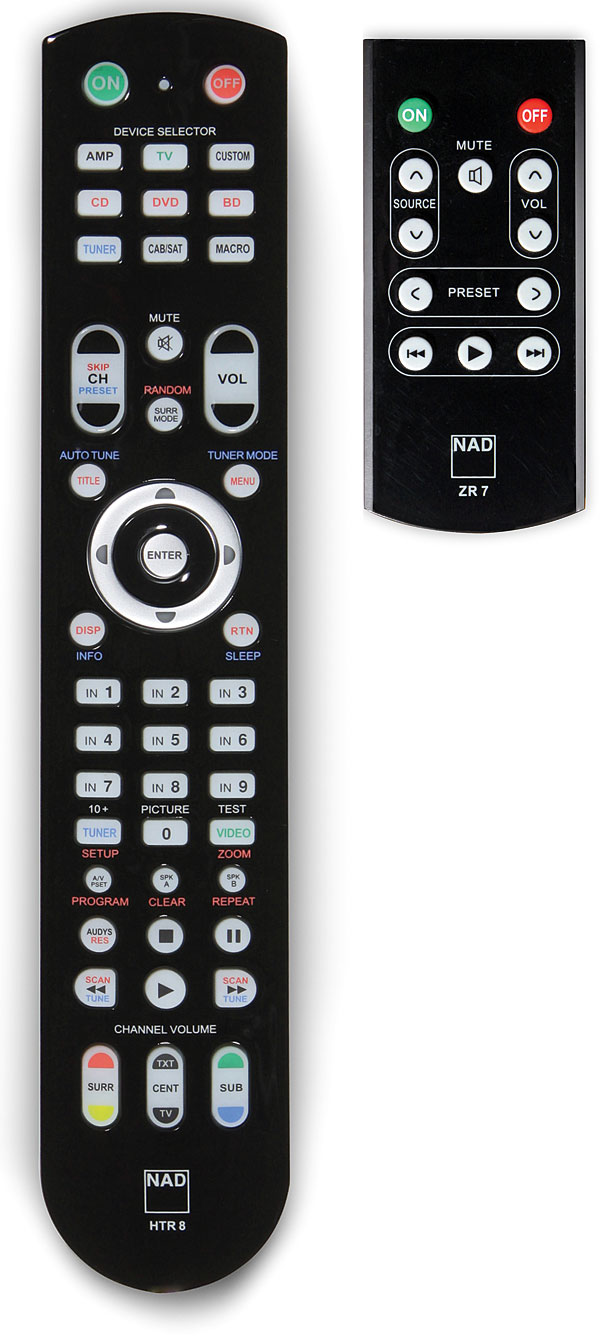
Audyssey identified my three-way floorstanders as small and set the crossover at 40 hertz, and it measured the subwoofer distance as 30 feet or three times the actual distance. But NAD’s Jeff Talmadge told me to leave both that way, so I did. The sonic results indicated he was correct. Although you can correct Audyssey’s automatic settings, my advice is, if Audyssey identifies your large speakers as small, don’t take it as an insult to your manhood. Just go with it.
After I ran and applied Audyssey, the sound became even better balanced tonally and more solid. The smoothed-out response produced superior detail resolution and improved spatial dimensionality. The T 787 produced prodigious, deep, and solid bass (down to the 40-Hz crossover point) through the front L/R speakers and the rest through the Adam Audio SW260 Mk3 subwoofer, which required some tweaking to properly integrate since I’d previously set the L/R speakers to large.
I ended up watching straight through both Blu-ray Discs of the second season of Elvis Costello’s superbly produced and engineered Spectacle music and interview TV show (Bono, Richard Thompson, Nick Lowe, Levon Helm, Bruce Springsteen, Lyle Lovett, etc.). Other than in terms of sheer power and overwhelming dynamic authority, the NAD’s clarity of transient attack and overall high-frequency performance, though somewhat drier, produced sound that was different than but equally pleasing to that of the McIntosh separates I reviewed in Home Theater’s June 2012 issue.
The NAD offers a taut, rhythmically certain, and harmonically correct bottom, meaty mids, and a clean top end devoid of etch and edge. These combine to produce ear-pleasingly well-balanced sonics that invite the kind of long-term listening pleasure few A/V receivers can produce.
With the NAD decoding at 192kilohertz/24-bit resolution, Neil Young’s well-worth-the-money Archives Volume 1 box set produced a tonally well-balanced stereo picture that revealed a wealth of detail within a spatially generous, three-dimensional field that floated untethered to the two loudspeakers. That’s the goal, and the T 787 managed it with an ease few receivers in my experience manage.
NAD’s EARS multichannel setting added a relatively pleasing surround enhancement, but being an insistent purist, I preferred listening to two-channel material as recorded.
When Young’s Topanga 2 disc had finished, I couldn’t believe 51 minutes had passed, or that I’d sat there enjoying it for that long. Given what awaits downstairs, upstairs two-channel listening is usually for work, not for pleasure. That’s a testament to the NAD’s musicality, but don’t ask for a definition of that word. You know it when you hear it, and you especially know it when you don’t!
Later, I listened to Mobile Fidelity’s exceptional-sounding reissue of Music From Big Pink in its entirety. I was more than satisfied by how the system managed the late Levon Helm’s deeply tuned drum kit and how well it differentiated between his voice and the reverb cushioned around it on “The Weight.” When Helm hits those low toms, they sounded like pitch-identifiable toms, not undifferentiated thumps. Unlike with some receivers, the higher the SPLs, the better the T 787 sounded. It’s a rare receiver that invites you, almost makes you, crank it up for extra enjoyment.
Unprocessed Video
The T 787 includes two HDMI outputs, which obviates the need to switch between them if you have both a wall-mounted display for everyday viewing and a projector for movies. With no video processing to get in the way of 1080p signals, the T 787 simply passes along what it’s fed.
Among the movies I watched was Super 8, J.J. Abrams’ ingenious Steven Spielberg tribute. Set in the late ’70s, it’s about a not-so-cute space alien long imprisoned and exploited by the military that escapes in a small industrial Ohio town and the group of adolescent amateur filmmakers who get caught up in the government’s plot to recapture it.
In the very Spielbergian telling, references to Close Encounters and E.T. abound, as objects (including bicycles) fly through the air and electronics turn on and off as if possessed. Abrams adeptly mixes violence, humor, and pathos, including a heartwarming and heart-stopping final encounter between the young protagonist and the alien.

Although the story has more holes in it than the proverbial Swiss cheese wheel, it makes for a heart-pounding, eye-tearing good time that the T 787 expressed fully both sonically and visually.
It created an enormous and seamless three-dimensional environment in which it revealed low-level details skillfully inserted into the soundtrack by the sound editors and mixers, punctuated by thunderous, room-rocking explosions. Dialogue reproduction was solid, dimensional, artifact free, and as natural sounding and convincing as I’ve heard from any A/V electronics, thanks in great part to that meaty midrange.
Conclusion
NAD recognizes it can’t effectively compete in the current “race to the price and sound bottom” that most A/V manufacturers seem intent on pursuing. With the T 787, NAD has taken a principled stand for superior sound quality over gadgetry and design elegance over buttons, bells, and whistles.
While the company’s logic looks self-evident to performance enthusiasts, at a time when peripheral gadgetry unrelated to a product’s core mission appears to take precedence everywhere (see most current touchscreen-happy car commercials), NAD’s stand is not without risk.
You can buy far less expensive AVRs packed with far more bullet-pointed features and adorned with more control operability. Other than its industrial-design elegance, what NAD offers here can’t be seen but must be heard—something that in today’s retail environment is becoming increasingly more difficult to do.
However, if you do get the opportunity to hear the T 787 in a proper setting, its superb sonics should be immediately obvious. And its future-proof modular design converts a product usually on its way to obsolescence upon purchase into a long-term investment. Combine the T 787’s superior sonics with its ease of use, and the $4,000 price tag begins to make as much sense as does music played through it. Overall, the NAD T 787 is the best-sounding A/V receiver I’ve yet heard.

